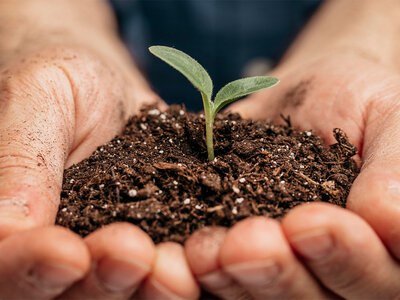1. Introduction
1.1 Background:
Cocopeat is a widely used growing medium in soilless cultivation due to its sustainable nature and beneficial properties (Handreck & Black, 2002). Particle size is known to impact plant growth, affecting factors like water retention and root development (Kang et al., 2004).
1.2 Objectives:
- To assess the effect of different particle sizes of Cocopeat on the growth of nursery plants.
- To identify the optimal particle size for maximizing seedling growth in greenhouse vegetables.
1.3 Hypothesis:
Variations in Cocopeat particle size will significantly affect seedling growth parameters, with a specific size range providing the most beneficial conditions for plant development.
2. Materials and Methods
2.1 Cocopeat Preparation:
Cocopeat was sieved to produce three particle size categories: fine (≤ 0.5 mm), medium (0.5 mm - 3 mm), and coarse (≥ 4 mm). Each size was used to prepare growing media for the experiment.
2.2 Experimental Design:
- Growing Medium Analysis: Physical and chemical properties of each particle size were measured, including bulk density, water retention, and air porosity (De Boodt et al., 1972).
- Plant Material: Seeds of selected greenhouse vegetables (tomato, bell pepper, cucumber, cabbage) were planted in pots with each particle size category.
- Growing Conditions: The experiment was conducted in a controlled greenhouse environment with standard light, temperature, and humidity conditions.
2.3 Measurement Parameters:
- Germination Rate: Percentage of seeds germinated in each medium.
- Seedling Height: Average height of seedlings measured weekly.
- Leaf Production: Number of leaves per seedling recorded bi-weekly.
- Growth Rate: Growth rate calculated from initial to final measurement.
3. Results
3.1 Germination Rate:
- Tomato: Medium particles yielded the highest germination rate (95%).
- Bell Pepper: Medium particles also resulted in the highest germination rate (88%).
- Cucumber: Fine particles showed the highest germination rate (84%).
- Cabbage: Fine particles achieved the highest germination rate (94%).
3.2 Seedling Height:
- Tomato: Medium particles led to the tallest seedlings (17.2 cm).
- Bell Pepper: Medium particles resulted in the tallest seedlings (20.3 cm).
- Cucumber: Medium particles supported the tallest seedlings (14.3 cm).
- Cabbage: Medium particles showed the tallest seedlings (8.0 cm).
3.3 Leaf Production:
- Tomato: Medium particles produced the highest number of leaves (7.2).
- Bell Pepper: Medium particles led to the highest leaf count (6.1).
- Cucumber: Fine particles resulted in the highest leaf count (4.8).
- Cabbage: Fine particles produced the most leaves (6.5).
4. Discussion
4.1 Impact of Particle Size:
- Medium Particles: Generally optimal for most vegetable seedlings due to balanced water retention and air porosity (Handreck, 1992).
- Fine Particles: Beneficial for specific crops like cabbage and cucumber, likely due to better seed-to-media contact and higher water retention.
- Coarse Particles: Less favorable conditions observed due to reduced water retention and nutrient availability.
4.2 Implications for Greenhouse Production:
Selecting the appropriate particle size can enhance seedling development, leading to stronger plants and potentially higher yields
5. Conclusion
5.1 Summary:
Medium-sized Cocopeat particles are recommended for most greenhouse vegetables. However, fine particles may be more suitable for certain crops like cucumber and cabbage
6. References
- De Boodt, M., Verdonck, O., & Deleersnyder, P. (1972). Physical Properties of Peat-based Growing Media. Soil Science Society of America Journal, 36(3), 455-458.
- Handreck, K. A. (1992). Soilless Cultivation: A Guide for Growers. Australian Journal of Soil Research, 30(5), 625-641.
- Handreck, K. A., & Black, N. D. (2002). Growing Media for Ornamental Plants and Turf. University of Western Australia Press.
- Kang, Y., Niu, G., & Carey, E. (2004). Physical Properties of Growing Media. HortScience, 39(3), 487-491.

